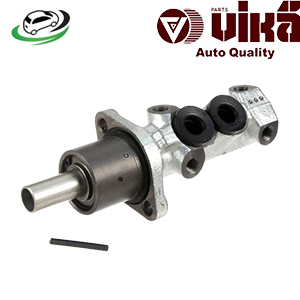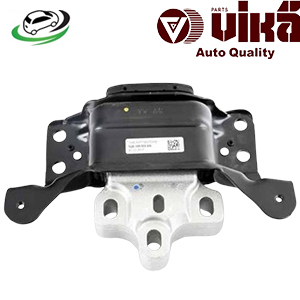-4%
Get VW CC FWD 2.0T/ VW Passat B6 FWD 2.0T Left Engine Mount 3C0199555Q
The left engine mount is a critical component in a vehicle’s engine assembly, designed to secure the engine to the vehicle’s chassis while absorbing vibrations and managing engine movements during driving. Although it might seem like a simple part, engine mounts—specifically the left engine mount—play a significant role in ensuring the engine operates smoothly and the overall driving experience remains comfortable.
In this comprehensive guide, we will explore the function of the left engine mount, its importance in the engine system, common issues that can arise, and how to maintain it to ensure longevity and reliability.
What is an Engine Mount?
An engine mount is a bracket that physically connects the engine to the vehicle’s chassis. Most vehicles are equipped with multiple engine mounts, with the number depending on the type of vehicle and its engine configuration. For example, a typical front-wheel-drive car might have three to four mounts: two side mounts (left and right), one rear mount, and one front mount.
The left engine mount specifically refers to the mount on the left side of the engine bay. It is responsible for keeping the engine stable on that side and ensuring that engine vibrations do not transfer excessively to the chassis. These mounts are often made of metal and rubber to provide both strength and flexibility.
Function of the Left Engine Mount
- Engine Stability: The primary function of the left engine mount, like other mounts, is to secure the engine to the vehicle’s frame. Without engine mounts, the engine would move freely inside the engine bay, leading to misalignment with other critical components such as the transmission and drivetrain. The left mount specifically helps to stabilize the engine on the left side, ensuring that the engine remains securely in place during acceleration, braking, and cornering.
- Vibration Dampening: Engine mounts are designed with rubber or hydraulic-filled components that help absorb and dampen the vibrations produced by the engine. This prevents the vibrations from transferring into the cabin, which would otherwise create a noisy and uncomfortable driving experience. The left engine mount plays a key role in reducing the vibrations from the engine’s natural rotational forces and balancing the load across the engine bay.
- Alignment and Support: The left engine mount works in conjunction with the right, front, and rear mounts to ensure the engine is properly aligned within the engine bay. This alignment is critical for maintaining the integrity of the drivetrain and exhaust system, as even small misalignments can lead to wear and tear on components like driveshafts and exhaust pipes. The left mount specifically helps to balance the weight of the engine on the left side of the vehicle.
- Controlling Engine Movement: During acceleration, deceleration, and cornering, the engine produces forces that would cause it to shift or rock if not properly secured. The left engine mount helps control this movement by absorbing the lateral and rotational forces generated by the engine. This ensures that the engine stays in its intended position, even under high torque conditions.
Types of Engine Mounts
Engine mounts come in various designs depending on the type of vehicle and its performance requirements. Common types of mounts include:
- Rubber Engine Mounts: The most common type of engine mount, rubber mounts are made from a combination of metal brackets and rubber inserts. The rubber component provides the necessary vibration dampening while the metal brackets secure the mount to the chassis and engine block.
- Hydraulic Engine Mounts: Some vehicles, especially luxury or high-performance models, use hydraulic mounts filled with a liquid that can absorb vibrations more effectively than rubber alone. These mounts are designed to provide a smoother ride by offering better vibration isolation.
- Active Engine Mounts: In modern vehicles, particularly high-end models, active engine mounts are used. These mounts feature electronically controlled systems that adjust the stiffness of the mount based on driving conditions. This allows for more precise control over engine movement and vibration isolation.
Importance of the Left Engine Mount
- Vibration Isolation and Ride Comfort: A properly functioning left engine mount is critical for maintaining ride comfort. Since the engine generates significant vibrations during operation, a damaged or worn-out left engine mount can lead to excessive noise and vibrations being transmitted to the cabin. This not only affects comfort but can also lead to driver fatigue on long journeys.
- Engine and Transmission Alignment: The left engine mount plays an important role in keeping the engine and transmission properly aligned with the drivetrain. Misalignment caused by a failing mount can lead to increased wear on components like axles, driveshafts, and even the transmission itself. This can cause more expensive repairs down the line if not addressed promptly.
- Reducing Engine Movement: By controlling engine movement, the left engine mount helps prevent damage to other engine components. Excessive engine movement can strain hoses, belts, and wiring, leading to premature failure of these parts. In extreme cases, a severely worn engine mount can cause the engine to shift dramatically during acceleration, damaging critical components such as the exhaust system or radiator.
- Impact on Vehicle Performance: Engine mounts play a direct role in how the vehicle handles, especially during acceleration and cornering. If the left engine mount is compromised, the engine may shift during these movements, causing a delay in power delivery or creating unwanted noises. This can lead to decreased performance and, in some cases, reduced safety during high-speed driving.
Common Issues with the Left Engine Mount
Despite being designed to last for many years, engine mounts can wear out over time due to various factors such as heat, vibration, and engine load. Some common issues with the left engine mount include:
- Worn or Cracked Rubber: The rubber component of the engine mount can degrade over time due to constant exposure to heat, oil, and engine vibrations. When the rubber wears out, the mount loses its ability to dampen vibrations, leading to increased noise and vibration in the cabin.
- Hydraulic Fluid Leaks: In hydraulic engine mounts, leaks can occur, leading to a loss of the fluid that provides the mount’s vibration-dampening capabilities. A leaking hydraulic mount can cause excessive engine movement and increase cabin vibrations.
- Loose or Broken Mount: Over time, the bolts that secure the left engine mount to the chassis and engine can become loose or even break due to the constant stress of engine movement. A loose or broken mount can result in excessive engine movement, leading to noticeable vibrations, clunking noises, and even engine misalignment.
- Increased Engine Noise: As the left engine mount wears out, engine noise may increase, particularly during acceleration. This is often caused by the engine making contact with the chassis or other components due to a lack of support from the mount.
Symptoms of a Failing Left Engine Mount
Recognizing the signs of a failing left engine mount can help prevent further damage to the engine and other vehicle components. Common symptoms of a bad engine mount include:
- Excessive Vibrations: One of the most noticeable symptoms of a worn left engine mount is increased vibrations in the cabin. These vibrations are often more pronounced when the vehicle is idling or during acceleration.
- Clunking Noises: A failing engine mount may cause the engine to shift during acceleration, deceleration, or cornering, resulting in clunking or banging noises. These noises typically occur when the engine makes contact with the chassis or other components.
- Engine Movement: If the left engine mount is damaged, you may notice the engine shifting or rocking more than usual when revving the engine or accelerating. This can be observed visually or felt as a delay in power delivery.
- Uneven Wear on Engine Components: A failing engine mount can cause other engine components, such as hoses, belts, and wiring, to experience increased wear due to excessive engine movement. This may lead to premature failure of these parts.
Maintenance and Replacement of the Left Engine Mount
Proper maintenance of the left engine mount can help extend its lifespan and ensure smooth engine operation. Here are some maintenance tips:
- Regular Inspection: Periodically inspect the engine mounts for signs of wear, such as cracks in the rubber or hydraulic fluid leaks. Pay special attention to the left engine mount, as it may be subject to more stress in certain engine configurations.
- Check for Loose Bolts: Ensure that the bolts securing the engine mount to the chassis and engine are tight. Loose bolts can cause the mount to move, leading to increased wear and eventual failure.
- Replace Worn Mounts: If you notice any of the symptoms mentioned earlier, such as increased vibrations or clunking noises, it may be time to replace the left engine mount. Replacing a worn engine mount can prevent further damage to the engine and other vehicle components.
- Avoid Aggressive Driving: Aggressive driving, such as hard acceleration and abrupt stops, can put extra stress on the engine mounts. Driving more smoothly can help reduce wear and prolong the life of the mounts.
Conclusion
The left engine mount is a vital component in a vehicle’s engine system, responsible for stabilizing the engine, reducing vibrations, and maintaining proper alignment with the drivetrain. A properly functioning engine mount ensures a smooth and comfortable ride while preventing damage to other engine components. By regularly inspecting the mount for signs of wear and addressing any issues promptly, drivers can maintain optimal vehicle performance and avoid costly repairs in the future.
Follow us on Facebook for more parts.




Reviews
Clear filtersThere are no reviews yet.